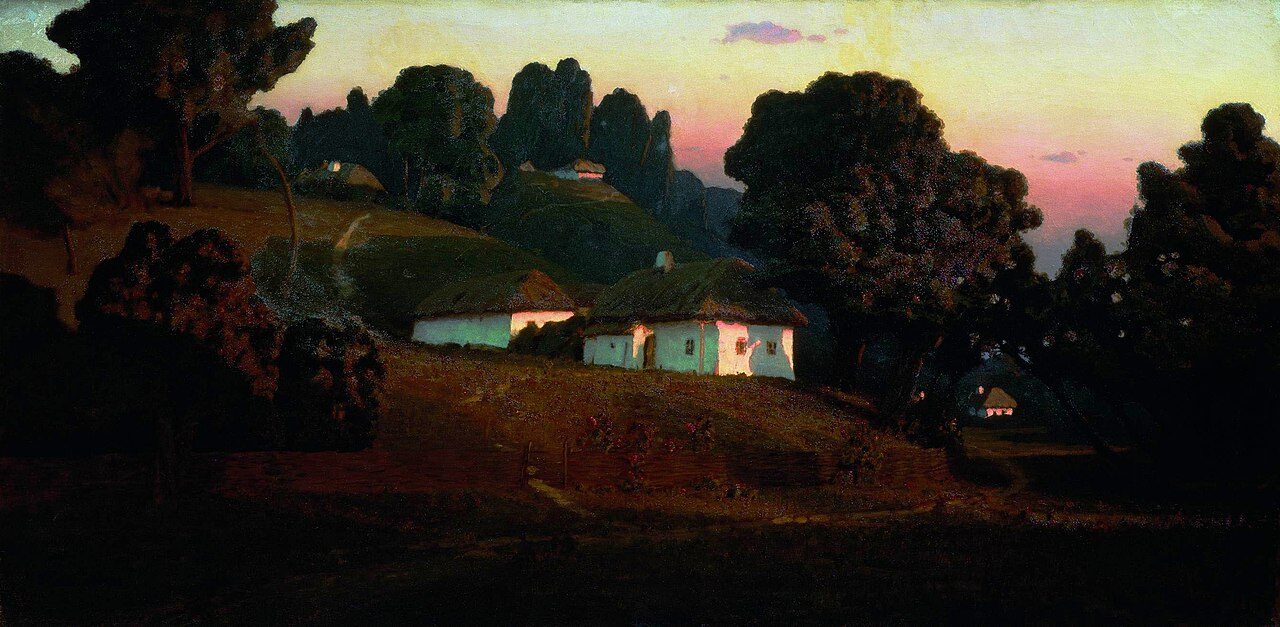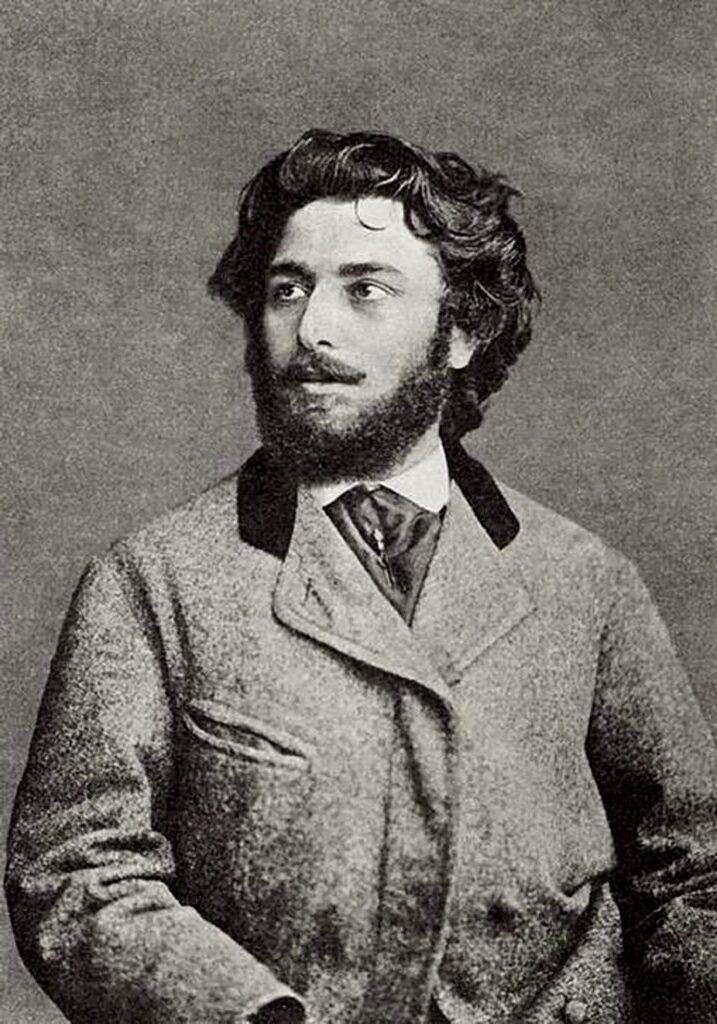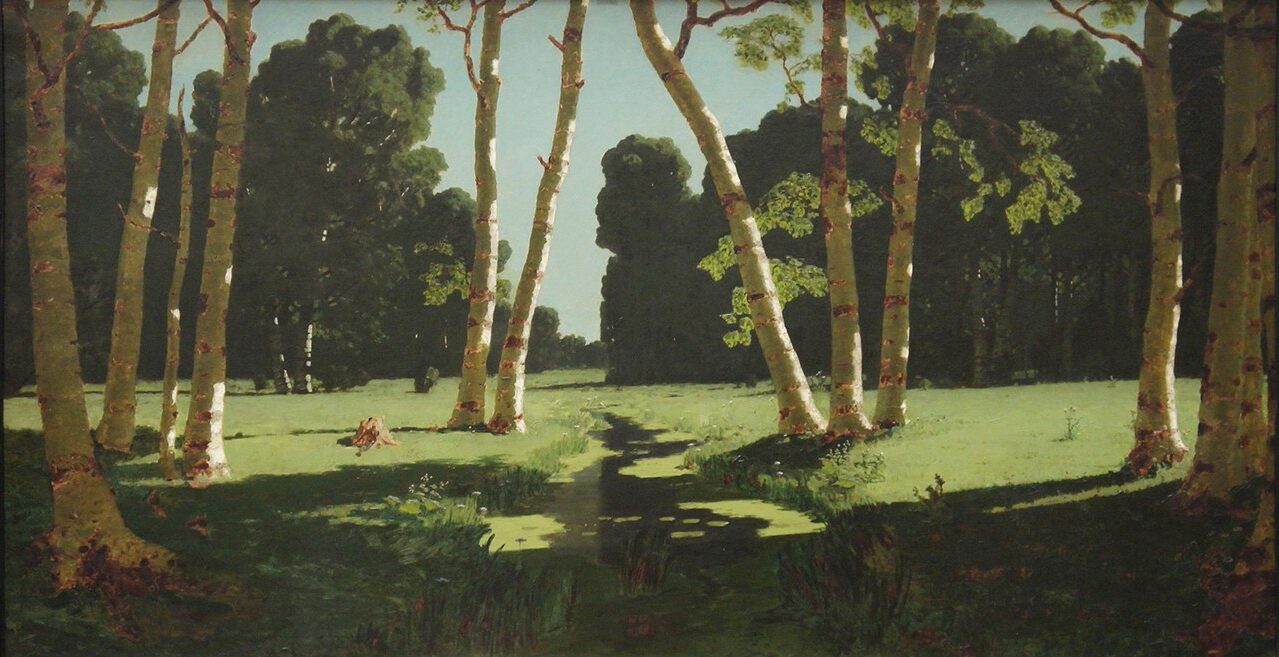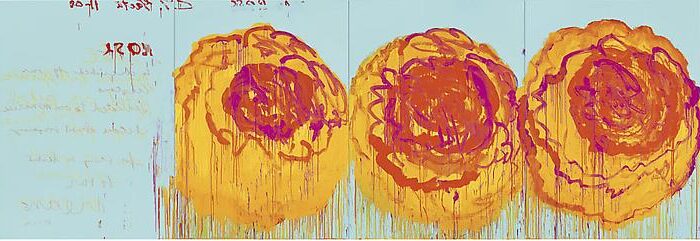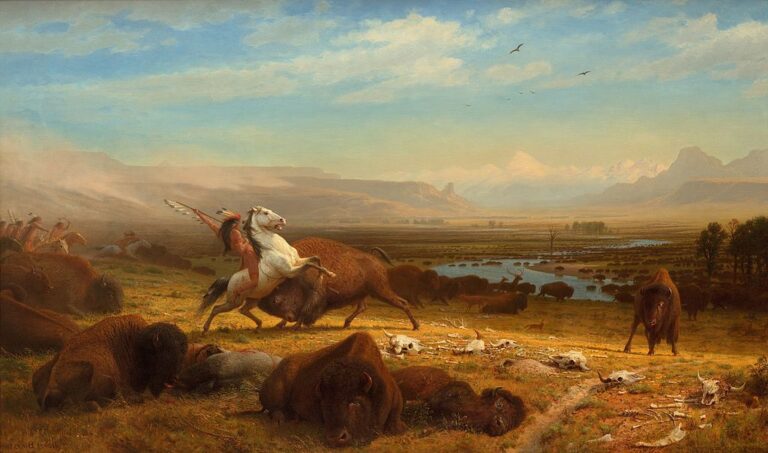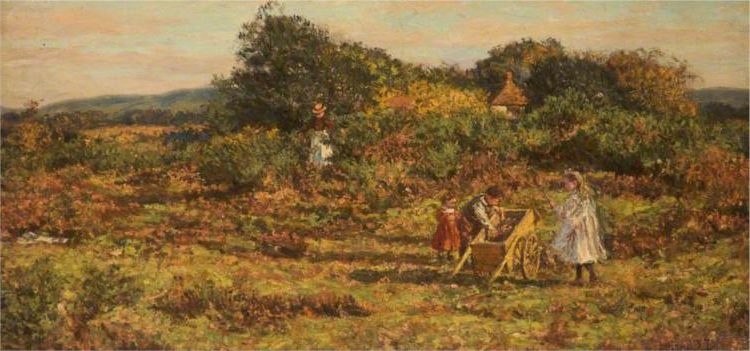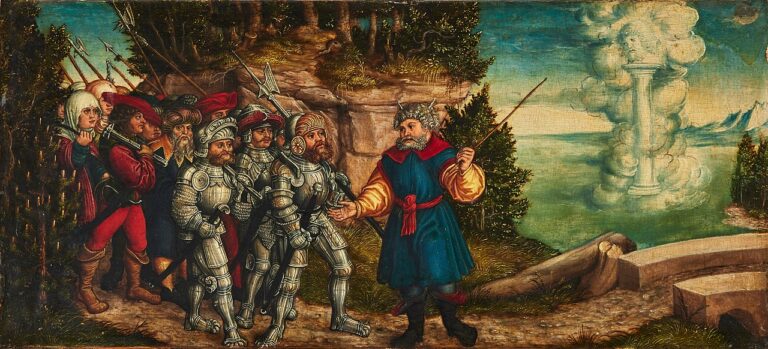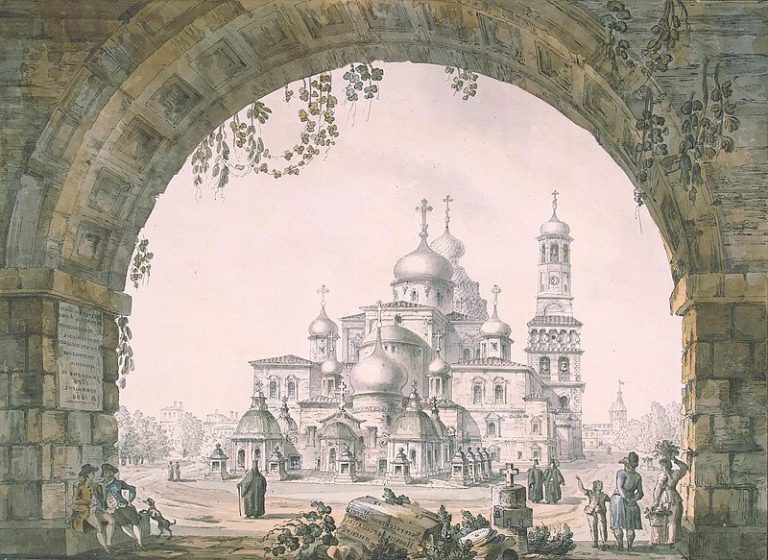Arkhip Kuindzhi: Painter of Luminous Landscapes in 19th Century Russian Art
Born: 27 January 1841, Mariupol uezd, Russian Empire (present-day Mariupol, Ukraine)
Death: 24 July 1910, St. Petersburg, Russian Empire
Art Movement: Luminism
Nationalité : Russe
Teacher: Adolf Fessler
Institution: St. Petersburg Academy of Arts
Arkhip Kuindzhi: Painter of Luminous Landscapes in 19th Century Russian Art
Life and Career of Arkhip Kuindzhi
Arkhip Ivanovich Kuindzhi emerged as one of the most distinctive landscape painters of the 19th century Russian art world. His journey from humble beginnings to artistic prominence showcases his determination and unique vision.
Les débuts de la vie
Arkhip Kuindzhi was born in 1842 in Mariupol, Ukraine, which was then part of the Russian Empire. He came from Greek ancestry, specifically from the Pontic Greek community. His early years were marked by hardship after becoming an orphan at a young age.
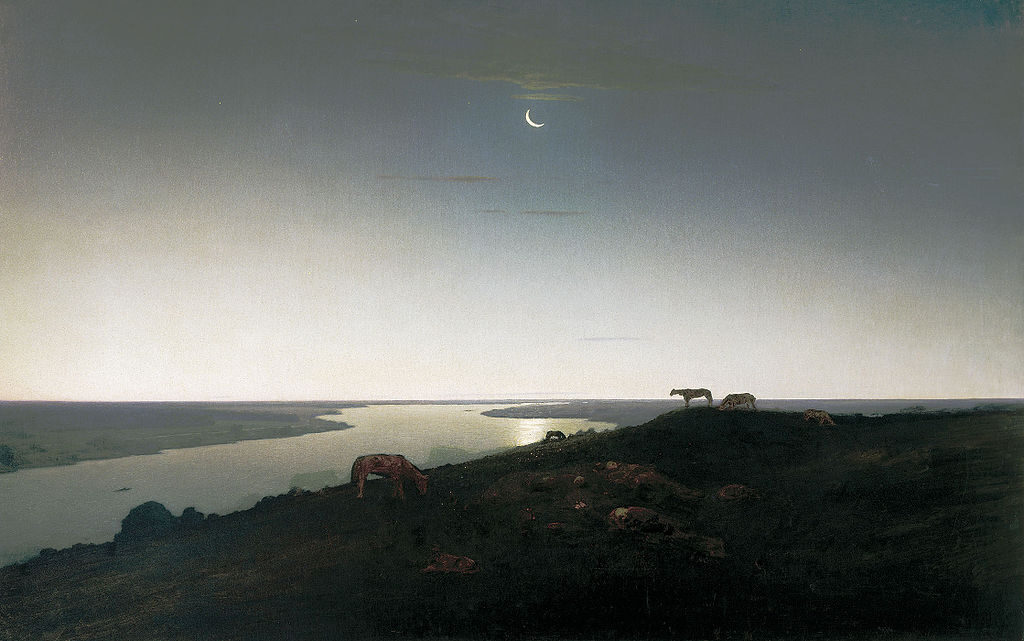
Night, 1905–1908 by Arkhyp Kuindzhi
Kuindzhi worked various jobs in his youth, including as a bread shop assistant and a retoucher at a photographer’s studio. These experiences helped develop his eye for detail and composition.
Despite his lack of formal early education, he showed a natural talent for art. The coastal landscapes of his hometown Mariupol influenced his later artistic sensibilities and passion for depicting nature.
Éducation et formation
In 1855, the young Kuindzhi displayed remarkable determination when he walked 500 kilometers to study under the renowned seascape painter Ivan Aivazovsky. This journey demonstrated his commitment to art at just 13 years old.
Though his time with Aivazovsky was brief, it proved influential to his development. Later, Kuindzhi attempted to join the Academy of Fine Arts in St. Petersburg, facing initial rejection but eventually gaining admission.
His formal training was complemented by his association with the Peredvizhniki (The Wanderers), a progressive group of Russian realist artists. This connection exposed him to new artistic ideas and approaches to landscape painting.
Influence and Peers
Kuindzhi developed a distinctive style characterized by dramatic lighting effects and bold contrasts. His work became widely recognized for its emotional intensity and innovative approach to depicting natural light.
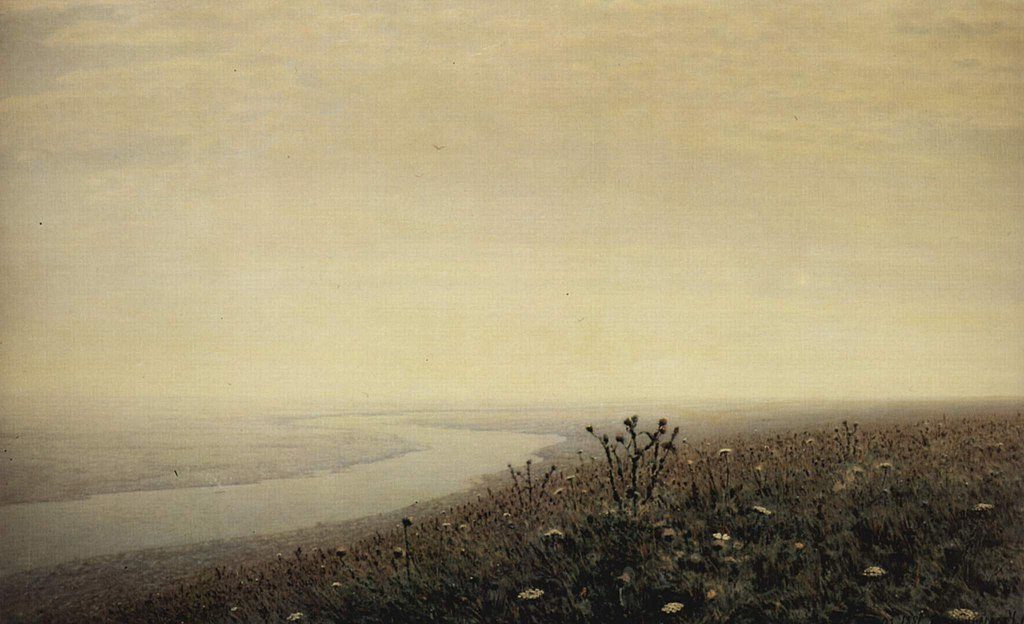
Dnieper in the Morning, 1881, by Arkhip Kuindzhi
Among his admirers was Nicholas Roerich, who appreciated Kuindzhi’s mystical approach to landscape. Kuindzhi’s influence extended through his teaching at the Academy of Fine Arts, where he mentored numerous young artists.
Despite his association with Russian artistic movements, Kuindzhi maintained his Ukrainian identity throughout his life. His paintings of Ukrainian landscapes captured both the physical beauty and spiritual essence of the region.
His unique position between cultures—Greek heritage, Ukrainian birth, and Russian artistic training—enriched his perspective and contributed to his artistic uniqueness.
Style artistique et contributions
Arkhip Kuindzhi developed a distinctive approach to peinture de paysage that revolutionized how light was captured on canvas. His mastery of dramatic illumination and bold color contrasts set him apart from contemporaries in the 19th century art world.
Évolution du style
Kuindzhi began his artistic journey with realistic landscapes that followed traditional Russian painting conventions. His early works showed careful attention to detail and natural settings. As he matured, he moved toward a more experimental approach.
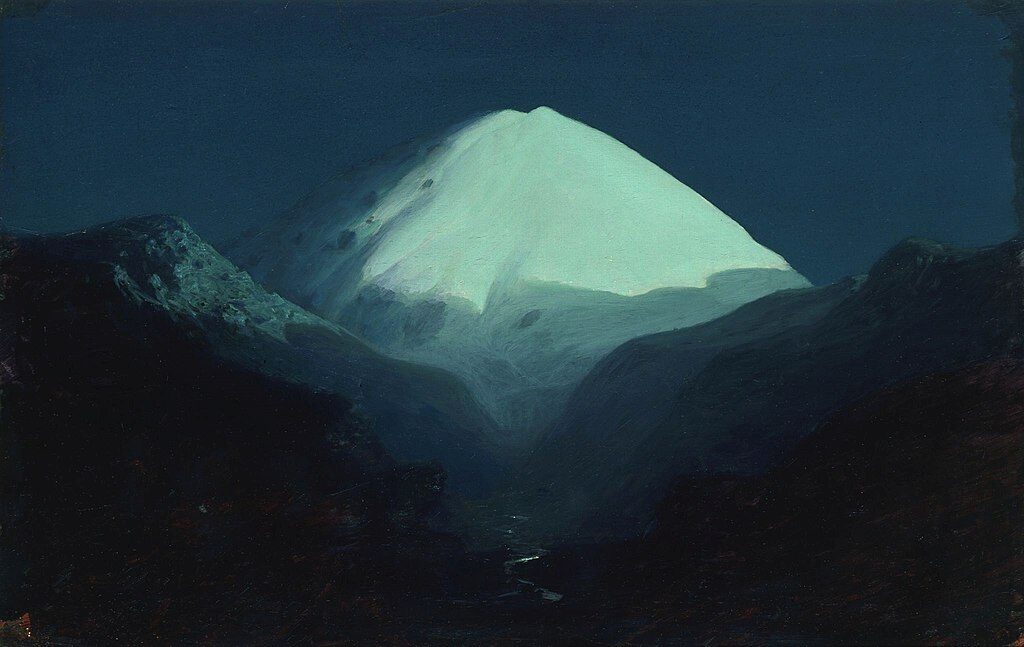
Elbrus, 1890–1895, by Arkhip Kuindzhi
His style evolved to emphasize dramatic lighting effects and simplified compositions. This shift represented a break from strict realism toward a more emotional and spiritual connection with nature.
Kuindzhi’s technique involved layering thin glazes of oil paint to create luminous effects. He often isolated elements of the landscape to highlight their symbolic importance.
His later works showed influence from both Realism and Impressionism, though he developed his own unique approach to color and light that transcended both movements.
Œuvres notables
“The Ukrainian Night” (1876) demonstrated Kuindzhi’s early mastery of nocturnal scenes with its moonlit landscape and deep shadows. This painting established his reputation for capturing atmospheric light effects.
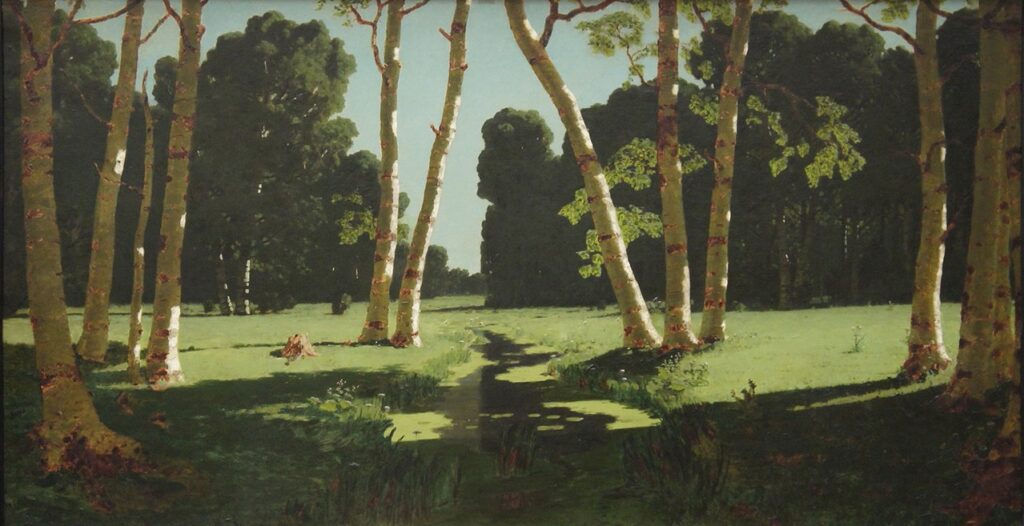
The Birch Grove, 1879, by Ivan Shishkin
“The Birch Grove” (1879) became one of his most celebrated works. It features brilliantly illuminated trees against a dark background, creating an almost supernatural glow. The painting’s dramatic contrasts captivated viewers and critics alike.
“The Forgotten Village” showcased his ability to convey profondeur émotionnelle through landscape. The painting’s lonely setting and distinctive lighting created a powerful mood of abandonment.
Kuindzhi’s “Red Sunset” used bold color contrasts and minimalist composition to create a striking visual impact. The work exemplifies his mature style with its focus on atmospheric light rather than detailed representation.
Héritage et reconnaissance
Arkhip Kuindzhi’s artistic contributions left a lasting impression on the landscape painting tradition. His innovative use of light effects and color created a unique place for him in art history, with his works continuing to inspire artists and captivate audiences long after his death.
Exhibitions and Galleries
Kuindzhi’s paintings are prominently displayed in prestigious institutions like the Tretyakov Gallery in Moscow, which houses some of his most famous works. His legendary painting “Moonlight on the Dnieper” captivated audiences when first exhibited and remains one of his most celebrated pieces.
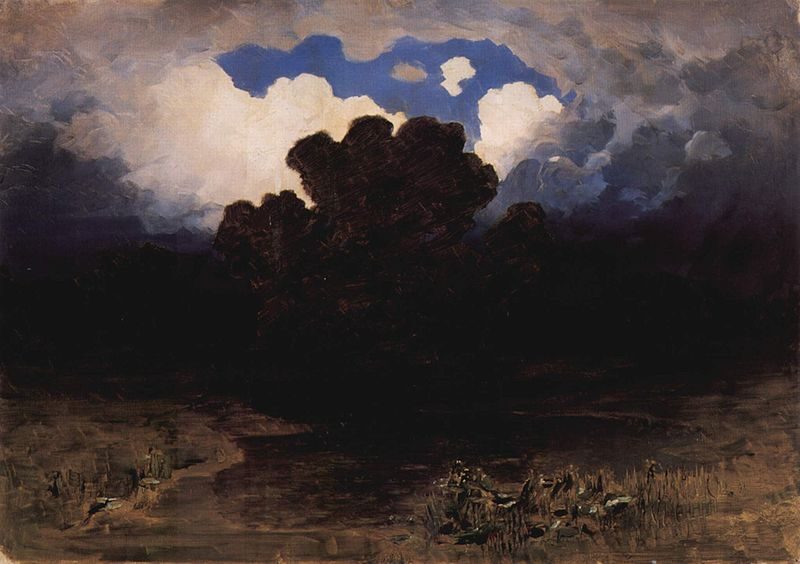
Surf and Clouds, 1882, by Arkhip Kuindzhi
After his death in 1910, the Kuindzhi Society was established according to his will. This organization received his substantial fortune of 421,800 rubles and 228 paintings. The Society organized posthumous exhibitions of his work, helping to preserve and promote his artistic legacy.
Many museums across Russia and Ukraine regularly feature his paintings in both permanent collections and special exhibitions. Despite gaps in his biography, art historians continue to discover new information about his life and work.
Influence sur d'autres artistes
Kuindzhi significantly influenced the development of landscape painting, particularly through his revolutionary light techniques. His brief association with the Wanderers (Peredvizhniki) movement exposed his work to wider audiences before he pursued his unique artistic vision.
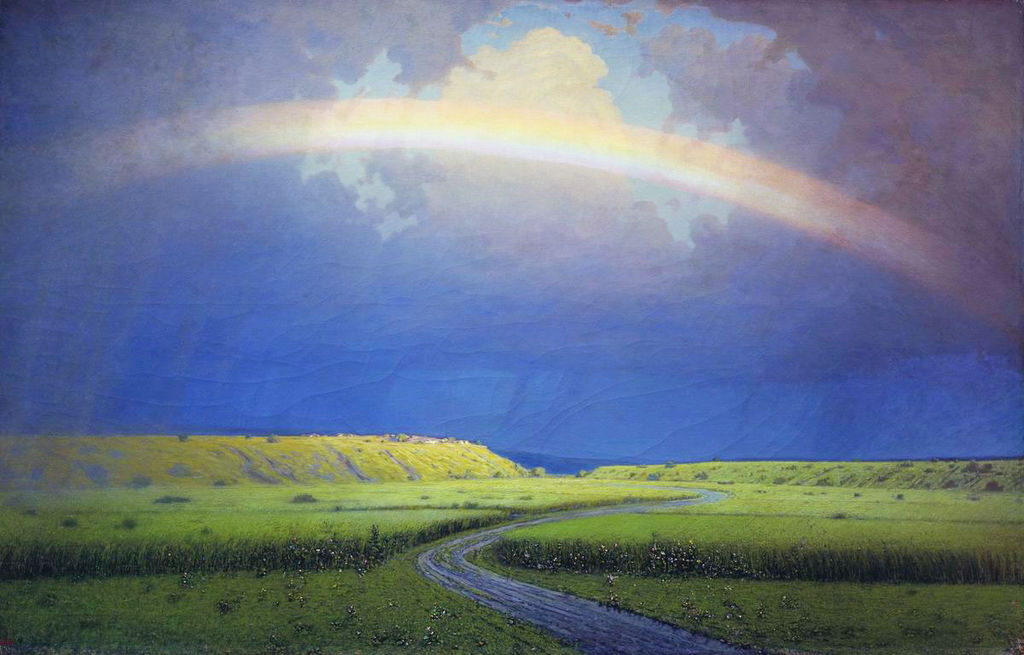
Rainbow, 1900-1905, by Arkhip Kuindzhi
Nicholas Roerich, a renowned painter and mystic, was among the notable artists influenced by Kuindzhi’s approach to capturing spiritual dimensions through natural landscapes. Kuindzhi’s teaching career further extended his impact, as he mentored numerous jeunes artistes.
His experimental approach to color and light encouraged other painters to explore new techniques in landscape representation. Contemporary critics recognized him as “an artist of unparalleled originality,” a reputation that has only strengthened with time.
His modest lifestyle, despite considerable wealth and fame, has added to his legacy as an artist dedicated purely to his craft rather than material gain.
Questions fréquemment posées
Arkhip Kuindzhi developed a unique artistic approach characterized by dramatic light effects and vibrant colors. His work bridged several artistic movements while maintaining a distinctive personal style that continues to captivate viewers today.
What are the distinctive characteristics of Arkhip Kuindzhi’s painting style?
Kuindzhi’s painting style is immediately recognizable for its dramatic use of light and color. He mastered the technique of depicting striking luminous effects that made his landscapes appear almost otherworldly.
His work features bold contrasts between light and shadow, creating scenes with an almost theatrical quality. This approach to lighting gave his paintings a sense of mystery and spiritual dimension.
Kuindzhi often used simple compositions with clean lines that emphasized the emotional impact of his scènes naturelles. His color palette tended toward vivid, sometimes exaggerated hues that heightened the emotional response to his landscapes.
Which art movements is Arkhip Kuindzhi associated with?
Kuindzhi began his career within the Realist tradition that dominated Russian art in the late 19th century. His early work showed influences from the Peredvizhniki (The Wanderers) group, which focused on depicting everyday Russian life and landscapes.
As his style evolved, Kuindzhi incorporated elements of Romanticism in his dramatic portrayal of nature and emphasis on emotional response. His later works showed hints of what would later develop into Symbolism, with their spiritual undertones.
Some art historians also identify pre-Impressionist and even proto-Expressionist qualities in Kuindzhi’s distinctive use of light and color. This positions him as an artist who bridged multiple artistic movements while maintaining his unique voice.
What are some of Arkhip Kuindzhi’s most renowned artworks?
“Moonlit Night on the Dnieper” (1880) stands as perhaps Kuindzhi’s most famous work. The painting’s extraordinary depiction of moonlight reflecting on water created a sensation when first exhibited, with viewers reportedly checking behind the canvas for hidden light sources.
“Birch Grove” (1879) showcases his mastery of light with its brilliantly illuminated landscape and trees. The painting demonstrates Kuindzhi’s ability to capture the spiritual essence of nature.
“Red Sunset” features his characteristic dramatic lighting and represents his skill with depicting atmospheric conditions. Other significant works include “Ukrainian Night,” “After the Rain,” and “Elbrus in the Evening.”
How did Arkhip Kuindzhi contribute to the development of landscape painting?
Kuindzhi revolutionized landscape painting through his innovative techniques for depicting light. His approach moved beyond literal representation toward a more emotional and spiritual interpretation of natural scenes.
He elevated landscape painting from mere documentation to a form capable of profound emotional expression. This shift influenced how later artists approached natural subjects.
Kuindzhi’s experimental approach to color and light anticipated developments in modern art that would emerge decades later. His willingness to exaggerate natural effects for emotional impact opened new possibilities for landscape painters.
Can you outline Arkhip Kuindzhi’s influence on other artists of his time?
Kuindzhi founded the Society of Artists in 1909, which provided a platform for emerging talents. Through this organization and his teaching at the Imperial Academy of Arts, he directly mentored numerous young artists.
His innovative approach to light and color influenced contemporaries like Isaac Levitan and later Russian symbolists. Many of his students carried forward his emphasis on the emotional and spiritual dimensions of landscape.
Kuindzhi’s bold style resonated with painters seeking to move beyond strict representation toward more expressive approaches. His work helped bridge traditional Russian art with modern movements emerging at the turn of the century.
What are the key themes explored in Arkhip Kuindzhi’s paintings?
The transformative power of light stands as the central theme in Kuindzhi’s work. His paintings consistently explore how light can change ordinary landscapes into transcendent experiences.
Ukrainian landscapes feature prominently in his oeuvre, reflecting his deep connection to his homeland. The Dnieper River, Ukrainian steppes, and forests frequently appear as subjects imbued with patriotic sentiment.
Kuindzhi’s work often explores the spiritual dimension of nature. Many paintings convey a sense of reverence for natural beauty that borders on the mystical, suggesting nature as a manifestation of divine presence.

